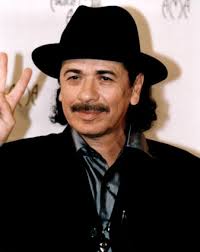Carlos Santana Totals Car While Asleep at Wheel

Rock icon Carlos Santana may be called “Smooth“, and “Supernatural” but maybe he should be called “lucky to be alive”.
The 66-year-old Grammy-winner fell asleep at the wheel on Friday night and was involved in what was called a “fender bender.” However TMZ reports that Santana’s flashy Fiska Karma was totalled- the front bumper was completely wrecked, and the airbags had gone off.
What’s more, the car may have hit at least one other car in the upscale Las Vegas neighborhood in which Santana was driving.
Fortunately, Santana himself was unharmed.
It was recently announced that Carlos will receive a 2013 Kennedy Center Honor.
What are the Dangers of Drowsy Driving?
Falling asleep at the wheel is clearly dangerous, but being sleepy affects your ability to drive safely even if you don’t fall asleep.
According to the Centers for Disease Control (CDC), drowsiness—
- Makes drivers less attentive.
- Slows reaction time.
- Affects a driver’s ability to make decisions.
What is the scope of the problem?
Although it may be difficult to attribute a fatal vehicle crash to drowsy driving, the National Highway Traffic Safety Administration estimates that 2.5% of fatal crashes and 2% of injury crashes involve drowsy driving. These estimates are probably conservative, though, and up to 5,000 or 6,000 fatal crashes each year may be caused by drowsy drivers.
Who’s more likely to drive drowsy?
- Commercial drivers.
- Shift workers (work the night shift or long shifts).
- Drivers with untreated sleep disorders such as sleep apnea.
- Drivers who use sedating medications.
- Drivers who do not get adequate sleep.
How often do Americans fall asleep while driving?
Among nearly 150,000 adults aged at least 18 years or older in 19 states and the District of Columbia, 4.2% reported that they had fallen asleep while driving at least once in the previous 30 days. Individuals who snored or usually slept 6 or fewer hours per day were more likely to report this behavior.
Prevent drowsy driving, before taking the wheel
Get enough sleep! According to the National Institutes of Health, adults need 7 or 8 hours of sleep a day, while adolescents need 9 or 10 hours.
If you have a sleep disorder, make sure to seek treatment.
Refrain from drinking alcohol or taking sedating medications before driving.
Lower levels of alcohol (below the legal limit) amplify the effects of inadequate sleep.
Drowsy Driving and Alcohol
Cognitive impairment after approximately 18 hours awake is similar to that of someone with a blood alcohol content (BAC) of 0.05%.8-1 After about 24 hours awake, impairment is equivalent to a BAC of 0.10%, higher than the legal limit in all states.
Here are some signs that should tell a driver to stop and rest:
- Difficulty focusing, frequent blinking, or heavy eyelids
- Daydreaming; wandering/disconnected thoughts
- Trouble remembering the last few miles driven; missing exits or traffic signs
- Yawning repeatedly or rubbing your eyes
- Trouble keeping your head up
- Drifting from your lane, tailgating, or hitting a shoulder rumble strip
- Feeling restless and irritable
For more information about drowsy driving go to the National Sleep Foundation’s website, DrowsyDriving.org



























0 comments